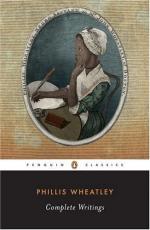|
This section contains 6,024 words (approx. 21 pages at 300 words per page) |

|
SOURCE: "Phillis Wheatley and the Black American Revolution," in A Mixed Race: Ethnicity in Early America, edited by Frank Shuffelton, Oxford University Press, 1993, pp. 225-40.
In the essay that follows, Erkkila emphasizes the revolutionary power of Wheatley's use of republican and religious figurations of enslavement and redemption.
In the years leading up to the American Revolution, those who advocated a break with England did so in the language of the two primary social tropes: the family and slavery. The position of America was figuratively represented as the natural right of the son or daughter to revolt against a tyrannical parent and the natural right of a slave to revolt against a master. Through a masterful deployment of these parent/child and master/slave tropes in Common Sense, which was published in 1776, Tom Paine galvanized popular support for the formal break with England that would occur six months later...
|
This section contains 6,024 words (approx. 21 pages at 300 words per page) |

|


